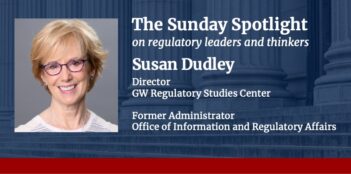
Banks can lower planned distributions to meet capital requirements.
The Board of Governors of the Federal Reserve System (Fed) has introduced its 2013 stress test program for large banks that could have systemic impacts on the financial sector, issuing instructions and guidelines for banks’ compliance with annual stress test and capital planning requirements. The Fed has issued two separate documents—one for the nineteen bank holding companies that have participated in stress tests since 2009, and one for eleven other firms that hold over $50 billion in assets and will be required to submit capital plans.
The Fed has revised its stress test rules from last year, giving the country’s nineteen largest banks the opportunity to amend capital plans by lowering planned distributions where the Fed finds that outlays are too high to meet the 5% minimum capital reserve ratio required for plan approval. The revision gives banks a one-time chance to lower planned dividend payments and stock buyouts once the Fed has alerted them that they will not meet minimum reserve requirements because of planned distributions.
Last year, when banks were not allowed to revise capital plans to lower distributions, two banks narrowly missed approval based on their failure to meet minimum reserve requirements. Some have speculated that the firms could have passed their stress tests if they had been given the chance to lower distributions slightly prior to a final decision.
The Fed began stress testing in 2009 in the midst of the financial crisis. The tests aim to provide confidence that the country’s largest banks have sufficient amounts of capital to withstand severe economic downturns without further destabilizing the financial system. Under Section 165(i)(2) of the Dodd-Frank Wall Street Reform and Consumer Protection Act, the Fed is required to complete stress tests for the nation’s largest and most systemically significant banks on an annual basis, and banks must conduct internal tests semi-annually.
Thirty bank holding companies and financial institutions—those with total assets of over $50 billion—will be required to participate in the stress tests in 2013. The nineteen largest bank holding companies must independently model expected outcomes given three macroeconomic states—baseline, adverse, and severely adverse—on a semi-annual basis and show that they can maintain capital reserve requirements and normal banking operations under each scenario.
In addition, all thirty participating holding companies must submit their capital plans to the Fed for approval. The Fed will then independently model expected outcomes for the nineteen largest banks under each scenario, and will publish select results in March, 2013. In addition to documenting whether banks have passed their stress test and whether capital plans were approved, the Fed will also publish whether the bank initially submitted a capital plan and then later lowered planned distributions to gain approval.
The Fed also recently issued final rules implementing some of the Dodd-Frank stress test requirements. The first rule implements the requirements for covered companies with over $50 billion in assets and their state member bank subsidiaries, setting out deadlines for different covered firms to fulfill semi-annual self-testing requirements. The second rule implements the extension of stress testing to firms primarily regulated by the Fed with $10 billion to $50 billion in assets, requiring them to conduct internal stress testing on an annual basis. Both took effect on November 15.
The Fed released its stress testing guidance several weeks earlier than last year, in response to industry complaints that firms did not have enough time to prepare their models and plans. In the past, banks and trade associations have complained about the lack of transparency in the Fed’s process. While the Fed has attempted to address those concerns, some observers now worry that the new changes to the program will allow banks to push the limit the first time around and develop riskier capital plans since they will have the opportunity to revise to decrease outlays if they must.
Covered banks are required to submit capital plans by January 7, 2013, and stress test results in March, 2013. The Fed released the three macroeconomic scenarios (baseline, adverse, and severely adverse) on November 15th, in addition to issuing a policy statement meant to provide firms with guidance for future stress testing.



